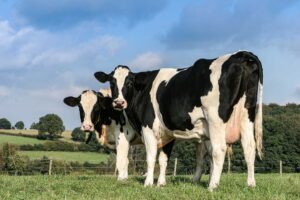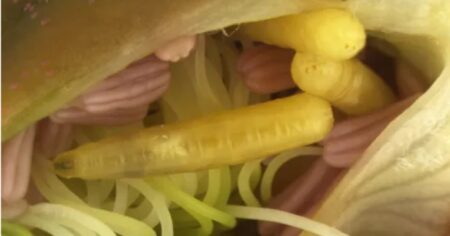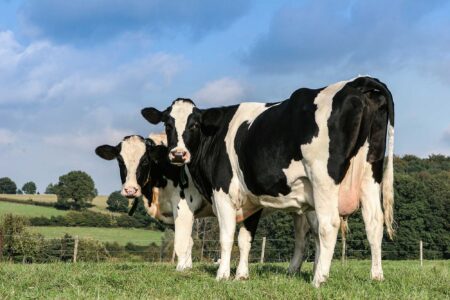By Jonathan Coppess, Gary Schnitkey, Carl Zulauf, and Nick Paulson
Since the tariff and trade conflicts that began in 2018, through the pandemic relief assistance efforts in 2020, American farmers have received an unusual amount of ad hoc and supplemental or emergency assistance (see e.g., Farmdoc Daily, April 18, 2018; July 31, 2018; Aug. 16, 2018; Aug. 28, 2018; May 22, 2020; July 10, 2020; Sept. 3, 2020; June 6, 2022; April 5, 2023). From 2018 to 2023, USDA reports a total of $77.8 billion in ad hoc and supplemental assistance to farmers, along with another $14.5 billion in non-USDA pandemic assistance (see, USDA-ERS, Sept. 5, 2024). On Oct. 25, 2024, Representative Trent Kelly (R-MS) introduced legislation to provide a new round of ad hoc economic assistance payments to farmers of selected crops for 2024 (H.R. 10045; see also, Kramer, Oct. 22, 2024; ProAg.com, Oct. 23, 2024). This article reviews the latest proposal and raises further questions about its implications (see e.g., Farmdoc Daily, July 29, 2020; Oct. 30, 2024).
Background
As previously discussed, crop prices will be lower for crops produced in 2024 than in recent years generally because of growth in total supply from expanded acres in South America and overall good yields in the United States (see e.g., Farmdoc Daily, Oct. 16, 2024; Oct. 8, 2024; Oct. 7, 2024; Sept. 24, 2024; Sept. 10, 2024; Sept. 9, 2024; Aug. 19, 2024; July 30, 2024). When coupled with continued high input costs (e.g., seeds, fertilizer, chemical pesticides, and fuel, as well as cash rent), the result can cause a squeeze for farmers between lower expected revenues against those higher costs (see e.g., Farmdoc Daily, Sept. 26, 2024). At the same time, farm payment programs (Agriculture Risk Coverage (ARC) and Price Loss Coverage (PLC)) are not expected to trigger payments to many farmers because crop prices were relatively high in recent years (see e.g., Farmdoc Daily, Oct. 29, 2024; Oct. 22, 2024). In general, these matters form the core of the premise behind the ad hoc proposal.
The current situation presents a new twist on what are generally historical challenges between crop prices, incomes, and costs. The anomalous situation since 2018 has been the unprecedented payments made in addition to traditional farm program payments. Figure 1 provides a background perspective using the national level nominal data from ERS (USDA-ERS, Farm Income and Wealth Statistics). Each year reported by ERS is presented relative to 2002 and the 2002 Farm Bill, tracing back to 1995, prior to enactment of the 1996 Farm Bill. Figure 1 provides a national level perspective spanning the last five farm bills.
Farmdoc
Discussion
The ad hoc proposal is titled: Farmer Assistance and Revenue Mitigation Act of 2024, or FARM Act (H.R. 10045). It seeks to provide “economic assistance payments” for the current, 2024 crop year for “expected gross return per acre” that is less than “expected cost of production per acre” (H.R. 1004). The legislation defines eligible commodities to include all covered commodities in the Farm Bill and specifies that cotton includes both extra-long staple and seed cotton (see 7 U.S.C. §9011). Notably, payments use a calculation that is only applicable to the eight listed commodities (corn, soybeans, wheat, cotton, rice, sorghum, oats, and barley). It adds that all other covered commodities not listed are to receive a “comparable estimate of total production costs” and “gross returns” (H.R. 10045). That calculation is as follows:
- Expected Gross Return Per Acre = the projected average farm price for the 2024/2025 marketing year as reported by USDA in the World Agricultural Supply and Demand Estimates (WASDE), multiplied by the 10-year average national average harvested yield per acre.
- Expected Cost of Production Per Acre = based on the most recent costs forecast by USDA, ERS for the eight listed crops (USDA, ERS: Commodity Costs and Returns).
- Economic Loss = Expected Cost of Production minus Expected Gross Return.
- Payment Amount = 60% of the Economic Loss multiplied by the eligible acres on the farm.
- Eligible Acres = acreage planted to the eligible commodities in 2024, plus 50% of the acres prevented from planting in 2024 (presumably as reported to the Farm Service Agency).
Notable in this calculation is the use of a 10-year average national yields instead of the expected or forecast yields (or actual when they are available) for the 2024 crop year, which is the year used for everything else and for which the economic assistance is intended to cover. For most crops the 10-year average would be lower than the expected yields for 2024, which would reduce gross return and increase payments. Cotton appears to be the exception in which the 10-year average is higher than the current 2024 projection. The calculation also uses the total economic cost of production for these crops, which includes costs for some crops like cotton (ginning) that is not included for other crops. As discussed previously, this would have the effect of increasing the expected cost per acre for those crops and thereby increasing the payment amount for them (see e.g., Farmdoc Daily, June 28, 2023; Sept. 22, 2022; March 8, 2018). Table 1 provides estimated payment rates for each of the listed crops.
Farmdoc
The bill would create a special payment limit provision for these payments, another break from historic precedent. If an individual or entity (except for joint ventures or general partnerships) receives less than 75% of its average gross income (2020-2022 tax years) from farming, ranching, or silviculture activities then the payment limit is $175,000; if the individual or entity (except for joint ventures or general partnerships) receives 75% or more of its average gross income (2020-2022 tax years) from farming, ranching or silviculture, then the limit is $350,000. If enacted, this would be the first instance in which payment limits were differentiated by the size of the farm; the proposed limits would be the first time that larger farms would be able to receive more in payments, which is contrary to the traditional policy intent of limiting large payments to large farms.
The economic assistance is to be paid out of the funds of the Commodity Credit Corporation (CCC) and the payments are to receive an emergency designation to avoid being subject to budget rules and disciplines such as pay-as-you-go (PAYGO) restrictions and offset requirements. Table 2 provides estimated spending on payments for the eight listed commodities. Payments for other eligible commodities not listed are not included in this table but would add to the overall cost of the proposed assistance.
Farmdoc
Finally, Figure 2 provides a map of estimated FARM payments for the eight listed crops per eligible acre by county. County-level per acre payments shown in Figure 2 are averages, weighted by eligible acres, of the estimated payment rates by commodity reported in Table 1. Thus, the highest average payment rates tend to be concentrated in the areas where the crops with the highest estimated payment rates were planted (or prevented) in 2024. This includes counties in the southern U.S. that produce cotton and, to a lesser extent, counties in the northern U.S. that produce oats.
Farmdoc
Concluding Thoughts
The FARM Act, introduced on October 25, 2024, proposes payments to selected commodities based on concerns about economic losses associated with the cost-price squeeze currently facing US crop producers. For the major commodities with a specified payment rate calculation outlined in the proposed legislation, we estimate the FARM Act would result in at least $21 billion in ad hoc support payments to farmers.
The sheer size of the proposed support payments present significant hurdles to the FARM Act becoming law as proposed. The estimated cost of $21 billion is more than the entire baseline for ARC-CO over ten years, or more than seven years of PLC baseline. Moreover, the $350,000 payment limit that can be doubled with a spouse or multiplied for every partner in a general partnership, could also present significant political barriers. Given that the proposal would need to be enacted in an expected lame duck session of Congress, such barriers could prove insurmountable because that session must deal with remaining appropriations and other disaster relief efforts. Controversial elements like the overall cost or the payment limits are likely to result in significant changes to the proposal, or its outright exclusion.
While the proposed FARM Act payments would provide payments to crop producers in the short-run, concerns over the longer-term impacts on agriculture should be considered. Market signals suggest that commodity prices could remain at current levels for the 2025 and into the 2026 crop years. If this occurs, further cost adjustments will be needed to generate viable returns for farmers; providing assistance at this scale will reduce market pressures needed to achieve those cost reductions.
A potential worst-case outcome for producers is that the Act ultimately does not pass, or passes in a modified form with much lower levels of support, due to the previously discussed political hurdles and results in another year of costs remaining at elevated levels based on the expectation of support as proposed. Based on the potential for this outcome, farmers, landowners, lenders, and input supplies should use caution in how they consider the proposed FARM Act in making decisions for the 2025 crop year.
Finally, the FARM Act could also be interpreted as an acknowledgement that current farm policy is not working or has too many holes and other problems that need to be fixed (see e.g., Farmdoc Daily, Oct. 30, 2024). Its consideration in a lame duck session likely precludes reauthorization of the Farm Bill, kicking the implications of that acknowledgement into a new year and a new Congress.
Reviewing the Latest Ad Hoc Payment Proposal in Congress was originally published by Farmdoc.



:max_bytes(150000):strip_icc()/29215cows-1bdf3313b96249b1b85a6bf3d98be881.jpg)



:max_bytes(150000):strip_icc()/Congress-CloseUp-bffb5a96caa44347843af3f6800e8474.jpg)


:max_bytes(150000):strip_icc()/CattleInPasture-MediumShot-2000-006ea236d06949f8992c7c35d9ad26a0.jpg)
:max_bytes(150000):strip_icc()/iStock-501199714-2000-a12af4b2f0e646279967cc184628eea8.jpg)
